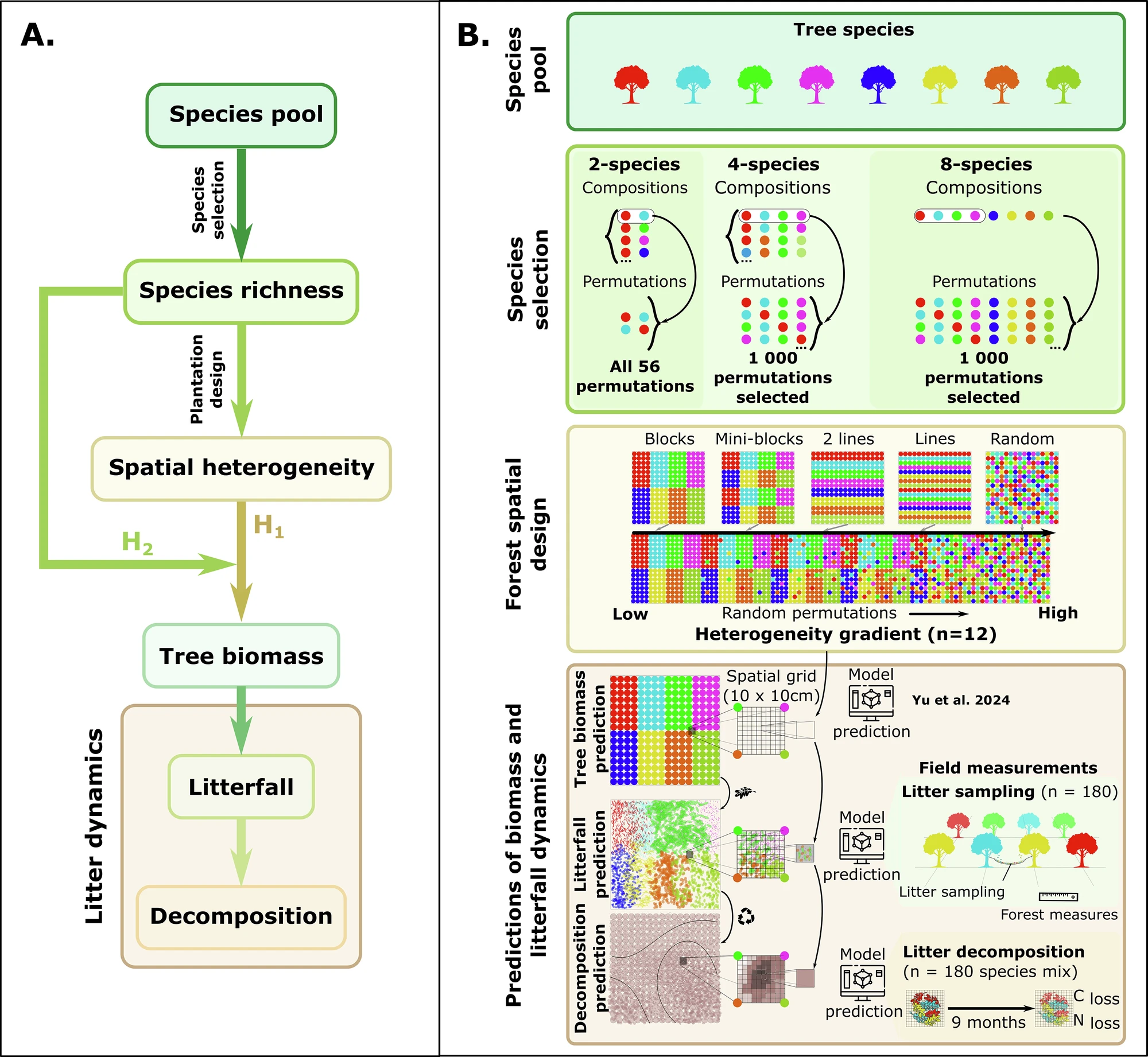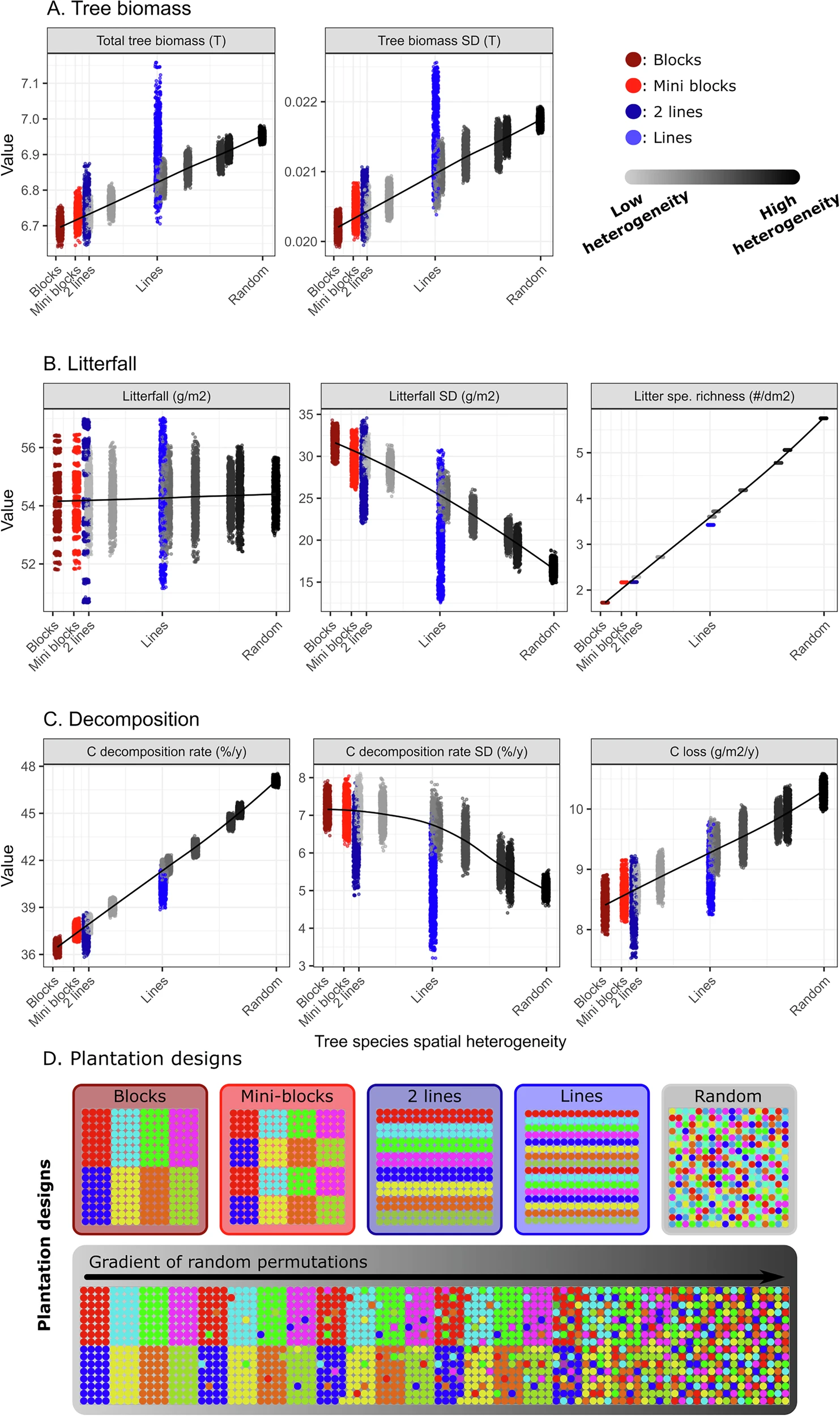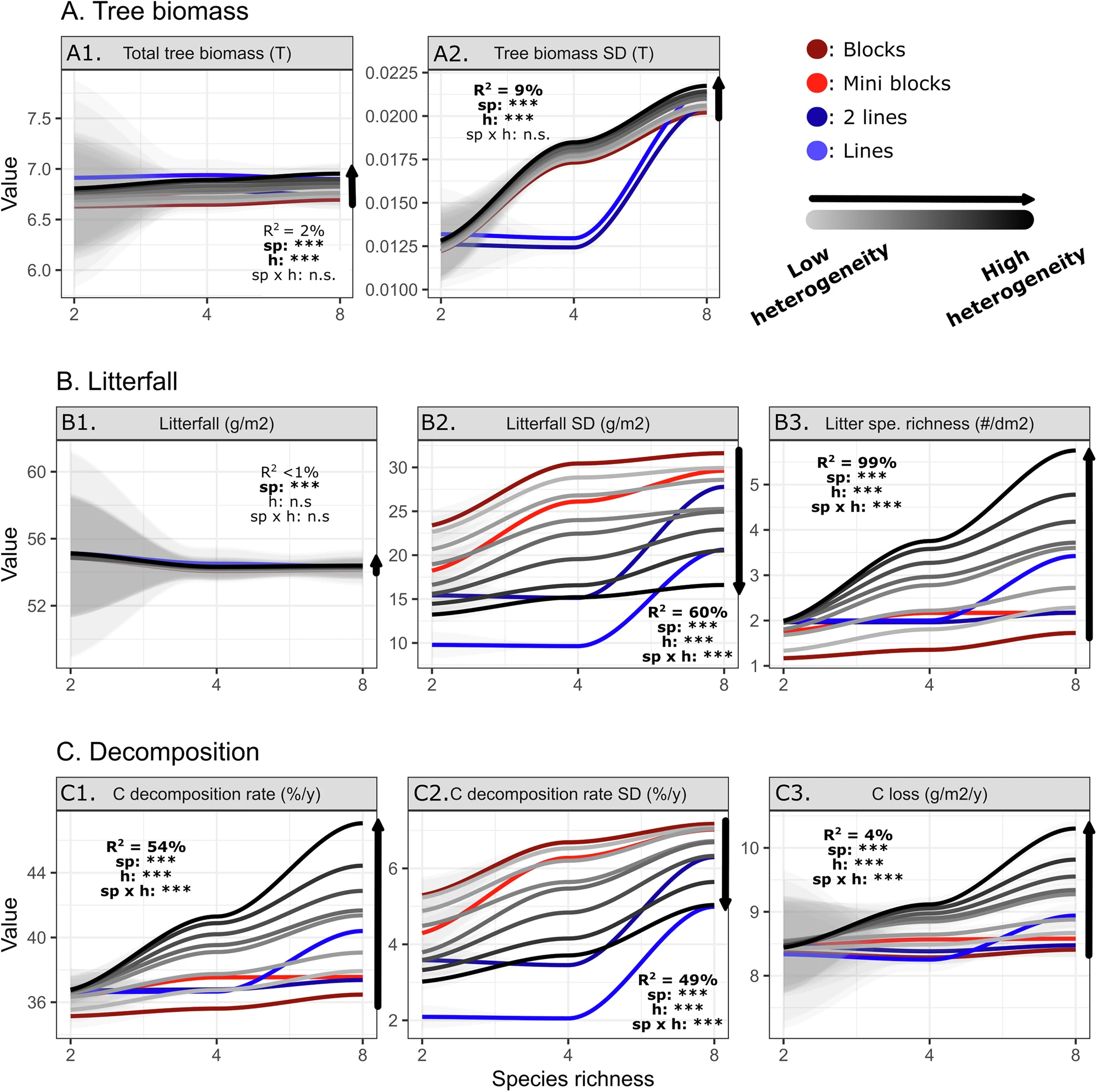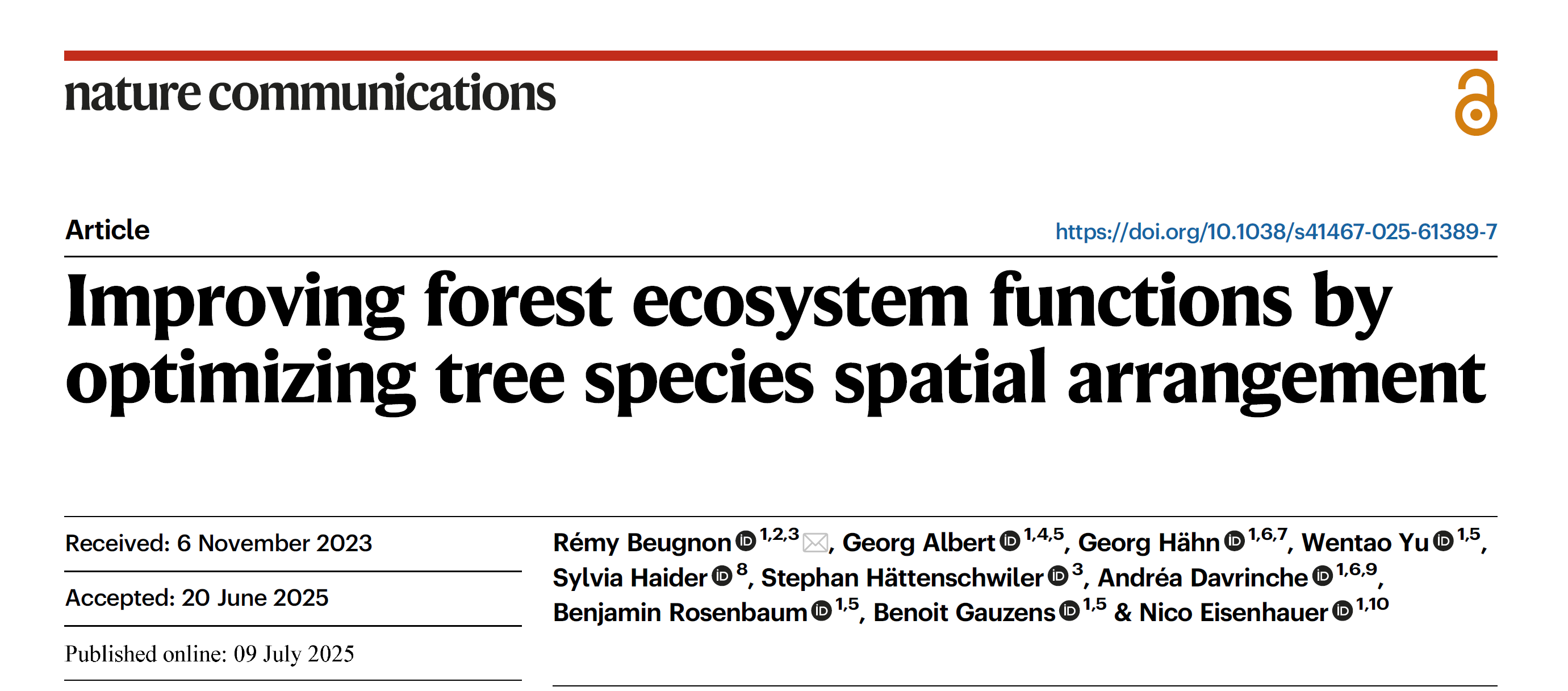Reforestation and afforestation programs are promoted as strategies to mitigate rising atmospheric CO2 concentrations and enhance ecosystem services. Planting diverse forests is supposed to foster such benefits, but optimal tree planting techniques, especially regarding species spatial arrangement, are underexplored. Here, using field measurements from the subtropical BEF-China experiment, we simulate tree growth, leaf litterfall, and decomposition, as a function of various spatial arrangements of tree species, from clusters of species to random distributions. Our simulations suggest that increasing tree species spatial heterogeneity in forests composed of eight tree species leads to higher biomass production, more evenly distributed litterfall, increased litter decomposition, and associated nitrogen and carbon cycling. These effects on forest nutrient dynamics are amplified with increasing species richness. Our data show that the spatial arrangement of tree species is a critical component determining biodiversity-ecosystem functioning relationships. Therefore, we suggest the explicit consideration of spatial arrangements when planting trees for reforestation and afforestation projects.

Figure 1. A Introduction of the hypotheses linking tree biomass and litter dynamics (i.e., litterfall and decomposition) to species spatial heterogeneity (H1) and the mediation by species richness (H2). B Description of the simulation design including species selection, plantation patterns, the prediction of tree biomass based on Yu et al.22, and the prediction of litterfall dynamics based on field measurements of litterfall and decomposition.

Figure 2. The response variables are grouped in panels: A tree biomass, B litterfall, and C decomposition variables. Tree species spatial heterogeneity (D) ranges from blocks of species (dark red) to fully random through the gradient of heterogeneity (gray gradient, Suppl. Note S1), mini-blocks (4 × 4 trees, light red), double lines (dark blue), and single lines of species (blue).

Figure 3. The interactions were tested on A tree biomass, B litterfall and C litter decomposition using a diversity gradient from two species mixture (n = 56) to four (n = 1000) and eight-species mixtures (n = 1000) and an 8 levels gradient of heterogeneity ranging from a block (in red) to a fully random design (gray color gradient).
Literature:
Remy Beugnon*, Georg Albert, Georg Hahn, Wentao Yu, Sylvia Haider, Stephan Hattenschwiler, Andrea Davrinche, Benjamin Rosenbaum, Benoit Gauzens, and Nico Eisenhauer. 2025. Improving forest ecosystem functions by optimizing tree species spatial arrangement. Nature Communications. 16(1):6286. https://www.nature.com/articles/s41467-025-61389-7.

